Discover the Power of
Healing Foods! Newsletter
Issue #005
Wed 13 February 2013
Lutein and Zeaxanthin - The Eye Protectors
Welcome to the 5th issue of Discover The Power of Healing Foods! newsletter.
In our previous issues we discussed how free radicals and antioxidants are engaged in an ongoing fight and how beta carotene is one of the big antioxidants and where we can find it.
(If you've missed those issues catch up by clicking on the links.)
In this issue we will discuss:
- Our Eyesight, a Most Precious Possession
Our Eyesight, a Most Precious Possession
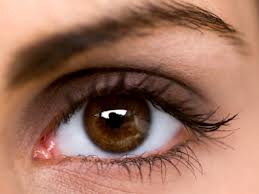
Have you ever had an object you took for granted and didn't appreciate the value of it until it broke or
was lost?
Most of us do the same with our eyesight. When we have it we don't even spare a thought
for it and take it very much for granted.
Until, that is, we start having problems with it: We realize we don't see as well as we used to, we seem to
squint every time we need to focus on a written page, threading a needle becomes almost impossible, driving
at night becomes a nightmare, and so on and so forth.
At that point we start to think, is there
something I can do to regain what I've lost? And if you're lucky enough to still have your eyesight, how can
you preserve it?
It must be recognized that once we've lost our eyesight it's extremely difficult
to get it back. Isn't it a hundred times easier to work toward keeping it rather than try to regain what
is lost?
If we look around carefully, we get reminders of how important it is to look after
what we have. Do what I did and look at your family and friends.
For example, my mother-in-law has had to have over 10 injections in her eyes (yes, I mean IN her eyes) to
try and prevent further loss of vision due to age related macular degeneration (AMD), having already
gone through two cataract operations.
I don't know about you, but I can't imagine anything
worse than seeing a needle coming at me and knowing that it's going to be pushed into my eye! Sorry
about the graphic picture!
Some people think that these conditions are inevitable as you get
older. Are they really?
The sad thing is that an increasing number of younger people develop
macular degeneration and, according to experts, it seems to be the result of diets depleted in antioxidants
and rich in 'empty calories'.
Generally speaking, AMD is the most common cause of severe, irreversible vision loss in people 50 and older.
As the word implies, it targets the
macula, a tiny yellow area near the centre of the retina that is highly
specialized to allow you to see details and provide clear central
vision, the kind you need to read and drive.
Cataracts occur when proteins in the lens
fray and their debris muddies the lens.
While
heredity may play a part, experts believe that free radicals damage is one of the main causes of these and
other conditions affecting the eyes, and much of this damage could be prevented if enough antioxidants were
present in our diet.
For example,
when researchers analyzed the diets of more than 1,700 female
volunteers in Iowa, Oregon and Wisconsin, they found that women under 75
who ate plenty of foods rich in lutein and zeaxanthin appeared to have
half the risk of macular degeneration compared to those who ate very
little of these foods.
Closer to home, I had a look at the diet
that my mother-in-law and other people I know with vision problems had
and I couldn't help wondering whether their diet was related to their
problems: Meat and potatoes seem to be their main staple foods along
with lots of white bread, with fruit and vegetables thrown in
occasionally for a bit of colour or flavour, and when they do have them,
they seem to be always the same and mostly overcooked. Sounds familiar?
Lutein and Zeaxanthin - Antioxidant Protection
As mentioned above, lutein and zeaxanthin lower the risk of vision problems, but what are they exactly?
They are two antioxidants that belong to the carotenoid family like beta carotene (we discussed
beta carotene in the last issue) and they're the only two carotenoids
found
in the eye.
They're a pair of yellow plant pigments that give fruits and vegetable their yellow colour, but dark green
leafy vegetables are also a very rich source of lutein and zeaxanthin, although chlorophyll covers their
yellow pigment.
Not surprisingly, studies have found that people whose eyes contained high
amounts of lutein and zeaxanthin were up to 80% less likely to be suffering from AMD. This is due to the
fact that the macula's yellow pigment is made up of lutein and zeaxanthin.
Researchers
believe they act as a kind of super-screen, or like internal sunglasses protecting the retina by
absorbing a damaging part of sunlight called blue light. And they also act as antioxidants to protect
the retina's cells from damaging free radicals (a previous newsletter talked about antioxidants and free radicals
extensively).
Zeaxanthin, the main component of the macula, may also bulk up its pigment, which
in turn appears to support the macula's sensitivity to visual signals.
Healthy macular pigment can improve your ability to react to bright flashes of
light or see objects
against a similar background — critical to driving at night or enjoying outdoor sports. The more pigments
your eye contains, the less likely it is to fall prey to AMD.
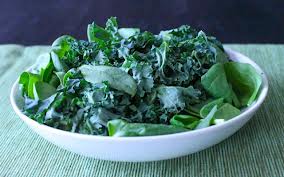
A Harvard study found that eating 6 mg. of lutein per day in food (roughly 1/4 cup cooked spinach) lowered the odds of macular degeneration by 43%.
A diet rich in kale and spinach has been shown to thicken the layer of macular pigment in the
eye.
Loading up on lutein also seems to reduce the odds of cataracts by 20 to 50%, according to
research.
On
top of being an excellent aid to prevent vision problems, lutein is
also being studied in relation to other conditions and it has been proven
beneficial in boosting the immune system, in the prevention of cancer
and clogged arteries, and protecting the lungs.
Where to Find Lutein and Zeaxanthin
As the body doesn't naturally generate lutein, you need to make sure you're getting enough from other
sources. One of the best things you can do to keep your vision sharp is to eat more greens as they're
loaded with lutein and zeaxanthin. Often these two antioxidants are found together in
foods.
Although greens - especially slightly cooked ones - carry the largest share of these two
antioxidants, the pair is also plentiful in brightly coloured fruits and vegetables like orange bell
peppers, corn, persimmons and tangerines.
Helpful Hint: Saute your greens in olive oil or add some
oil-based dressing to your salad. Fat helps the body absorb lutein and zeaxanthin.
If you eat lots of green leafy vegetables, along with brightly
coloured fruits and vegetables, you also get plenty of beta carotene,
vitamin C and E, all of which are essential for good eyesight.
In
a major clinical trial, the National Eye Institute found that high
doses of beta carotene and vitamins C and E, coupled with zinc, stopped
or slowed the progression of AMD by 19 to 25%, and that is without the
added benefits of lutein and zeaxanthin!
Although the effective doses
were far higher than what you get from diet alone, heaping your plate
with food dense in these nutrients makes sense, especially for people
who already have AMD or those at increased risk of it (such as those
with a family history of the disease, those with light eye colour or if you sit at the computer
everyday!).
In
the Harvard study mentioned above, eating sauteed spinach four to seven
times a week for three months even reversed some early signs of macular
degeneration.
One cup of cooked kale, collards, spinach or turnip greens supplies a
whopping 12 to 25 mg. of these two nutrients.
Best Food Sources of Lutein and Zeaxanthin
| Foods | mg. per 1/2 cup |
|---|---|
| Kale, cooked | 10.0 |
| Collards green, cooked | 7.0 |
| Spinach, raw | 3.3 |
| Spinach, cooked | 6.3 |
| Broccoli, raw | 1.0 |
| Broccoli, cooked | 1.7 |
| Brussels sprouts, cooked | 1.7 |
| Yellow corn, cooked | 1.2 |
|
Egg yolks have small amounts of lutein (about 200 mcg. per yolk), which gives them their yellow colour, due to the fact that hens eat corn. However, egg lutein is particularly well absorbed by the body, probably due to the type of fat they contain. Tufts University research showed that blood levels of lutein shot up 200 to 300% higher after eating
egg yolks than after eating spinach! |
List of Foods Containing Lutein:
|
 |
List of Foods Containing Zeaxanthin:
|
Lutein Supplements
If you think you can't eat huge amounts of these fruits and vegetables (for whatever reason) you might consider supplementing with lutein and zeaxanthin.
The lutein and zeaxanthin present in supplements is usually extracted from marigolds, which are a very rich
source of these antioxidants.
The amount needed to maintain good eyesight has not been confirmed
yet. Some experts believe that 4 to 10 mg daily may be needed to convey the benefits shown in some eye
studies - the amount in 1/4 to 1/2 cup cooked spinach. Other studies show that you need more, 20 mg. of
lutein and 6 to 10 mg. of zeaxanthin daily.
Probably the best policy is to eat as many of the
fruits and vegetables listed above as you can, plus take a supplement for good measure.
There are no known side effects from either short-term or long-term use of supplements of lutein
and zeaxanthin and no interactions with other drugs have been found.
The best combination
of supplements to preserve sight, even if it has started to fail, is almost certainly a combination of
lutein and zeaxanthin, together with vitamin C, riboflavin, lycopene and
selenium; a turmeric supplement to boost the antioxidant enzyme glutathione peroxidase; and
the flavonoids in bilberry, a herb traditionally used to treat visual complaints.
Other
supplements that can help prevent and treat the early stages of vision problems are vitamin D and
omega-3 fatty acids, also present in salmon and other fatty fish.
Have a look at this list of supplements to support your eyesight that I've compiled for you...
In Conclusion...
... don't wait until you've lost your eyesight before you decide to implement the advice you find here.
Act now by including as many of the foods mentioned above as you can on a daily basis and start taking supplements now if you're concerned. It might take months before you start seeing an improvement, so the sooner you start the better!
Coming Next...
I hope you have enjoyed reading this newsletter. So far we've discussed three antioxidant carotenoids, beta
carotene, lutein and zeaxanthin. Another important carotenoid is lycopene - which I meant to discuss
this time, but I realized it would have been too much to take in, so I will discuss it next time. How can
you benefit from it and where can you find it?
Look out for the next newsletter, you don't want
to miss it!
Also, if this newsletter has raised some questions in your mind about antioxidants or you'd like specific
information on them, don't hesitate to get in touch with me.
The next issue will be sent out on
Wed 13th March 2013.
Until Next Time,
Aurora Raisbeck
P.S.
If you liked this newsletter, please do a friend and me a big favour and "pay it forward". If a friend did forward this to you and you like what you read, please subscribe by visiting Discover the Power of Healing Foods!
Comments? Ideas? Feedback? I'd love to hear from you. Just use the Contact Me form and let me know what you think.
Or fill in the form below to help me improve it.
Go To Foods' Healing
Power Homepage from Lutein and Zeaxanthin - The Eye Potectors
Search for information on this site:
Receive Discover the Power of Healing Foods! Free
Newsletter
The Antioxidants Series:
Issue #3 - Free Radicals and Antioxidants - The Never Ending War
Issue #4 - Beta Carotene - A Powerful Ally in our Fight Against Free Radicals
Issue #5 - Lutein and Zeaxanthin - The Eye Protectors
Issue #6 - Discover the Benefits of Lycopene - Your Best Defence Against Cancer
Issue #7 - What are Flavonoids and
How Can We
Benefit from Them?
Issue #8 - Harness the Power of Anthocyanins -
Your Purple Defence
Issue #9 - Hesperidin and Other
Citrus Flavonoids - Your Cancer Fighters
Health Benefits of Blueberries -
Are They Exaggerated?
Most Popular
Pages:
The Best "Fish Oil" Supplement is Not Made from Fish
Bananas for High Blood
Pressure
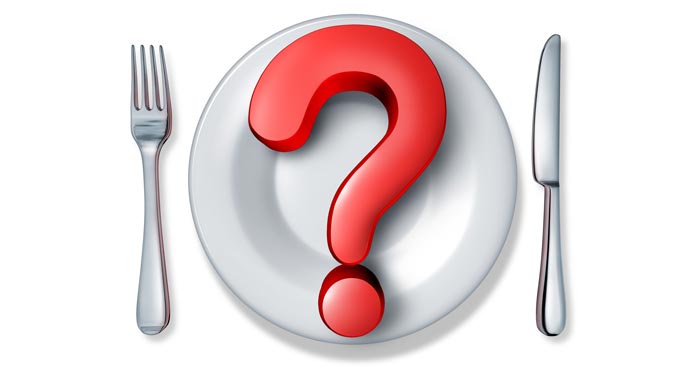
Elimination Diet for IBS and Other Food
Sensitivities


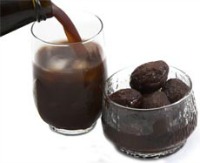
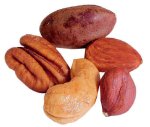
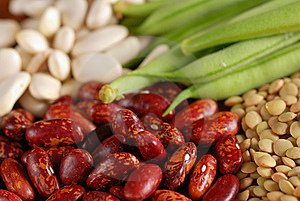
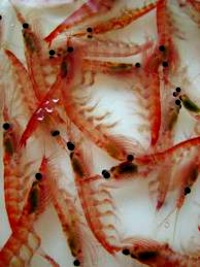
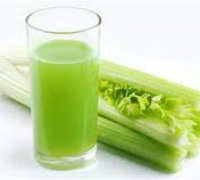

New! Comments
Have your say about what you just read! Leave me a comment in the box below.